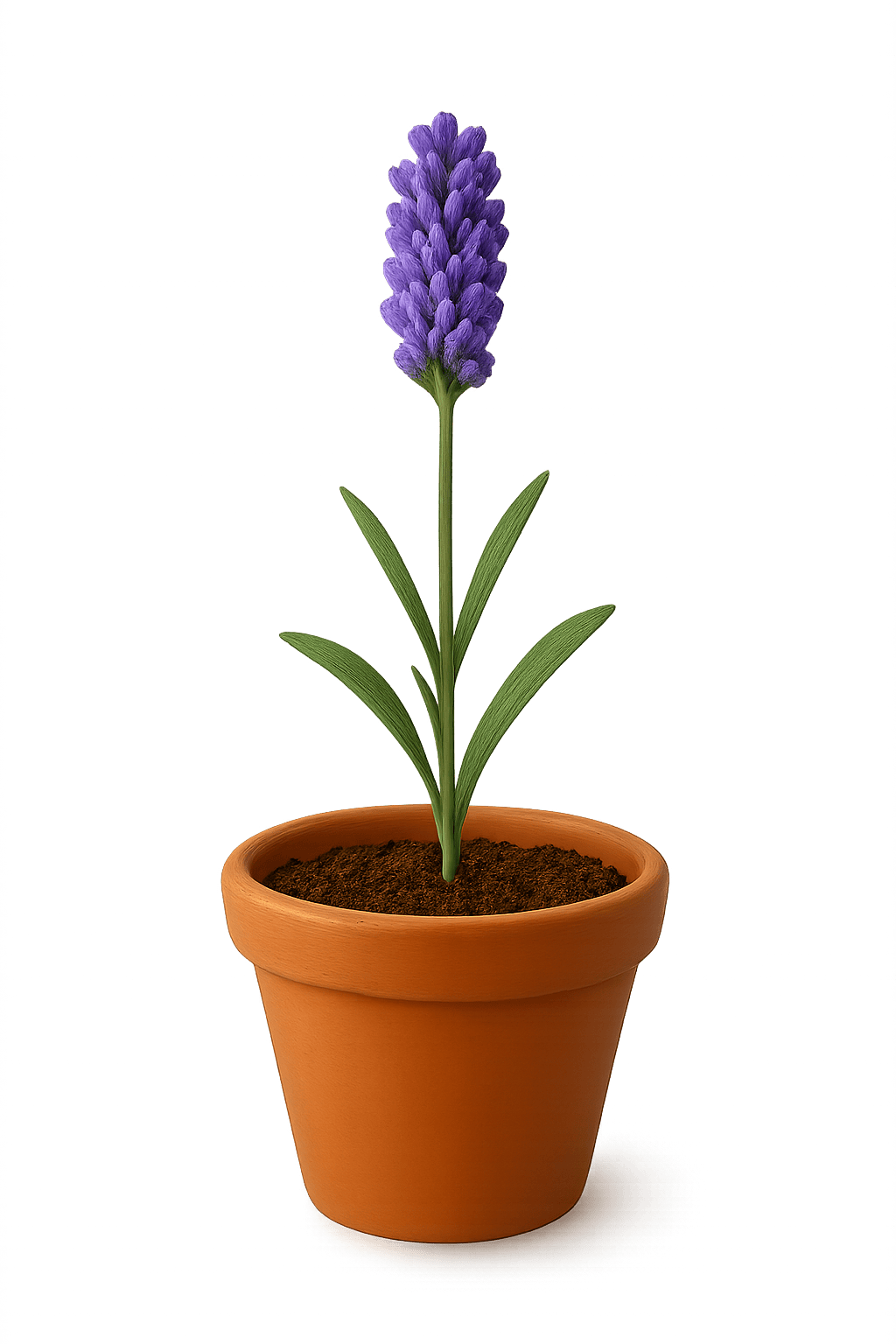Lavender
Lavender Detailed Encyclopedia Introduction
Lavender is a fragrant Mediterranean herb known for its calming properties and beautiful purple flower spikes, perfect for aromatherapy.

Basic Info
Family:Lamiaceae
Scientific Name:Lavandula
Origin:Mediterranean region
Flowering Period:Summer
Height:30–60 cm
Lifespan:Perennial
Morphology
Leaves:Narrow grey-green leaves with fragrance
Flowers:Purple flower spikes with strong aroma
Roots:Fibrous root system
Stem:Woody base with herbaceous shoots
Growth Habits
Soil Requirements:Well-drained, sandy, slightly alkaline soil
Watering Needs:Drought tolerant once established; water sparingly
Light Requirements:Full sun
Temperature Requirements:15-30°C (59-86°F)
Classification & Varieties
Main Classifications
Ornamental Varieties
Professional Care
✂️ Pruning Management
Pruning Timing:After flowering in late summer
Pruning Method:Cut back one-third, avoid old woody stems
Pruning Purpose:Promote bushier growth and more flowers
Required Tools:Sharp pruning shears
🛡️ Pest & Disease Management
Common Pests:
Common Diseases:
Prevention Measures:Good drainage, proper spacing, avoid overhead watering
Treatment Methods:Remove affected parts, improve drainage
🌱 Fertilization Management
Fertilizer Type:Balanced slow-release fertilizer
Fertilization Frequency:Once yearly in spring
Fertilization Timing:Early spring before new growth
Fertilization Amount:Light application
💧 Water Requirements
Watering Frequency:Every 1-2 weeks when soil is dry
Watering Amount:Deep watering to encourage deep roots
Watering Method:Water at base, keep foliage dry
Dehydration Signs:Wilting leaves, dull foliage
Basic Care Tips
- •Requires full sun exposure (at least 6 hours daily)
- •Prefers well-draining soil, avoid overwatering
- •Prune after flowering to maintain shape and promote new growth
- •Fertilize sparingly, once a year in spring
- •Good air circulation prevents fungal diseases
Ecology Value
Pollinators:Bees, butterflies
Wildlife:Attracts beneficial insects, deer resistant
Environmental Value:Soil erosion control, pollinator support
Cultural Symbolism
Symbolic Meaning:Purity, silence, devotion, serenity
Historical Background:Used for centuries in perfumes and medicine
Related Festivals:Lavender festivals in Provence and other regions
Artistic Expression:Featured in impressionist paintings